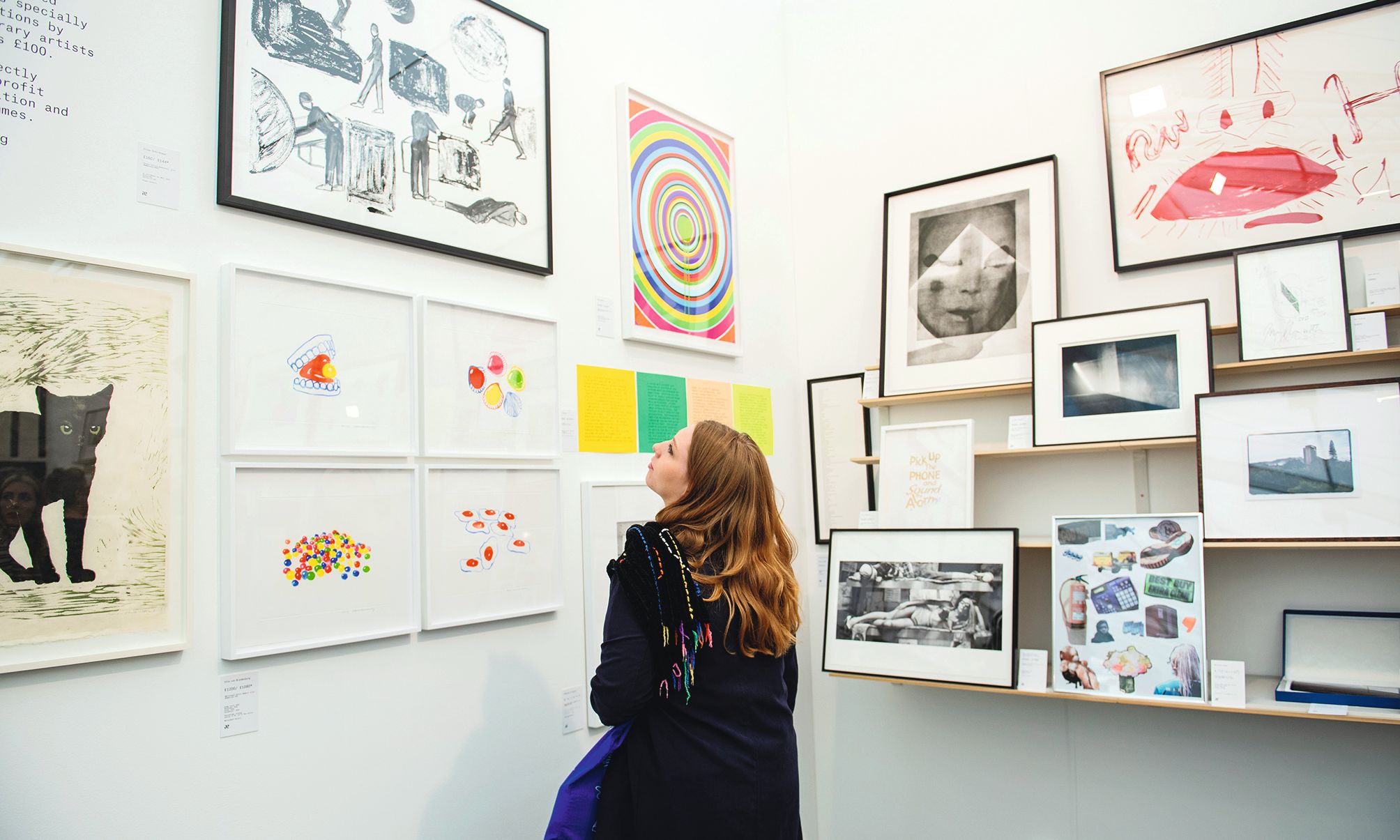Editioned prints are a great way of getting into art collecting—but do not expect to be able to invest cheaply in the next big name in art
Photo: Linda Nylind / Frieze
If you go to an art fair or gallery as an observer, the idea of actually buying anything is daunting—even if you have the money. So how do you get started? For nearly all of the collectors we talk to, the answer is the same: you buy an editioned print or other work on paper. The prices in many cases are reasonable, starting at around £100, or even less, and you can pick up some quality work if you look carefully and do a little research.
As well as buying from fairs and commercial galleries, you can try one of the many UK museums and public galleries that sell genuine editioned works by contemporary artists. These tend to be artists who have exhibited at the institution or worked with them in some manner. They are an excellent way to start buying art. Here are a few tips from personal experience:
1. Ignore the frame, you’re not getting that.
2. Go small. Major institutions like the Tate and Royal Academy of Arts sell editions, but these tend to be of big-name artists and are more expensive. You will have more success finding a bargain by looking at the next tier down, with galleries such as Camden Art Centre or the Institute of Contemporary Arts (ICA, which is one of the arts organisations that form Allied Editions); institutions not primarily associated with contemporary art, like the Foundling Museum; or smaller establishments outside London, such as Nottingham Contemporary or Focal Point Gallery in Southend-on-Sea.
3. Scroll back on the museum or gallery’s website to the last pages. You’ll find hidden gems from once little-known artists that were not snapped up at the time because, well, they were not well-known artists.
4. What kind of work does the artist usually make? If they’re a printmaker and the work is a print, you’re in luck. If they’re a painter and the work is a giclée (a fancy name for an inkjet print), then you’re likely just getting a nice quality reproduction rather than a considered work of art.
5. Be wary of buying works with words or slogans. It’ll be momentarily entertaining/funny/witty, but once you’ve read it a dozen times, it’ll feel more like that terrible joke your forgetful relative tells you every Christmas.
6. Look again at the frame. You’re still not getting it. But if it really suits the work, then ask the shop where they got it framed and go and do the same. Framers keep a record of the materials and dimensions they use so they should be able to knock up the same one for you.
7. Buy what you like. It’s an easy thing to say, but really look at the work. It might be cool, it might be trendy, the artist might be hot, but do you want to look at it over and over again on your living room wall?
8. Consider texture. Even “flat” images have texture: richness from different types of ink used, marks from the printing process, colour saturation that may not be there in online reproductions. Or perhaps they don’t—they’re just a print out that the artist hasn’t even bothered to sign (just buy a poster instead).
9. Don’t speculate. You will not spot the next big artist. Follow point 7 and then maybe, if you are very lucky, you might accidentally spot the next big thing. But you probably won’t. And anyway, most museums have terms and conditions that forbid reselling the works (although whether this is legally enforceable is another question).
10. Buy it on credit, but only if it’s 0% interest. And, of course, only if you have paid your bills—your lovely work of art will do little to placate the bailiffs. If you can afford a modest sum each month, schemes like Own Art, which partners with Arts Council England, can work well, allowing you to spread the cost. Last year I bought a print by an esteemed British artist who recently had a big institutional show, for £25 a month, for ten months, got it framed like it was displayed in the shop, and it now brings me immense joy every time I glance up at it.

